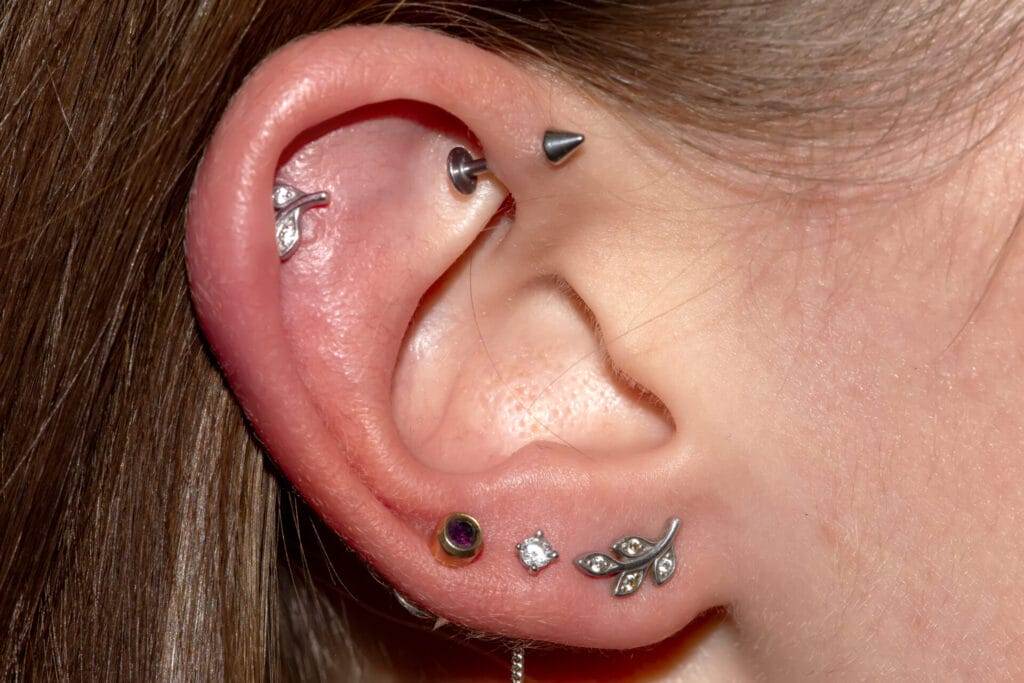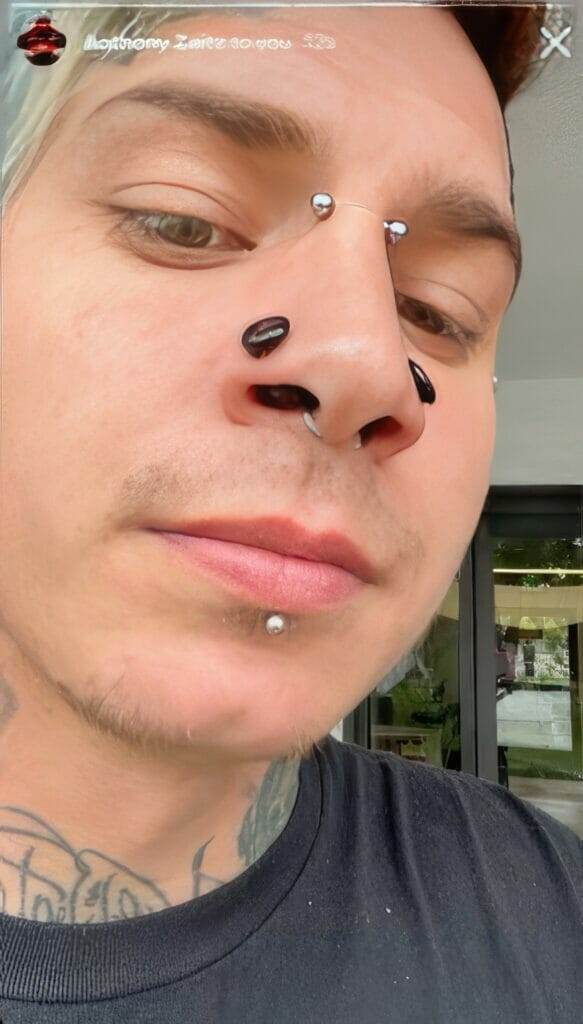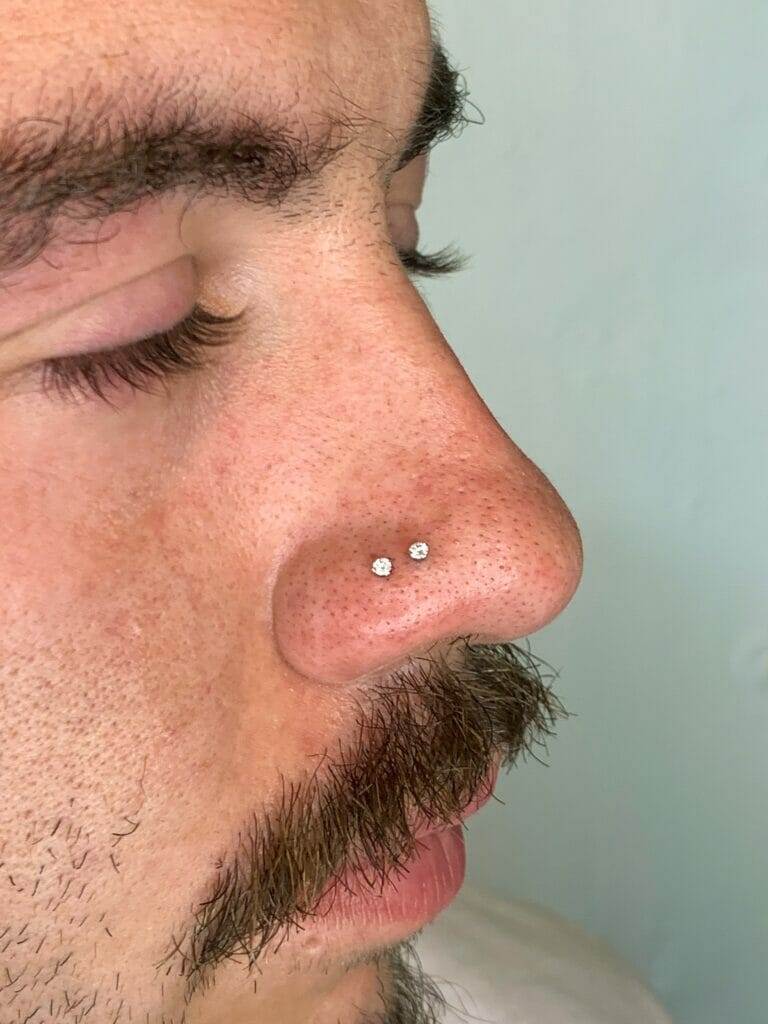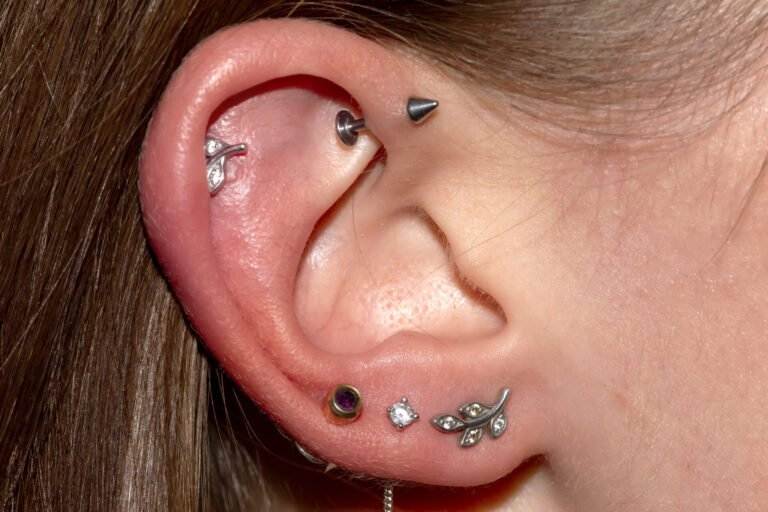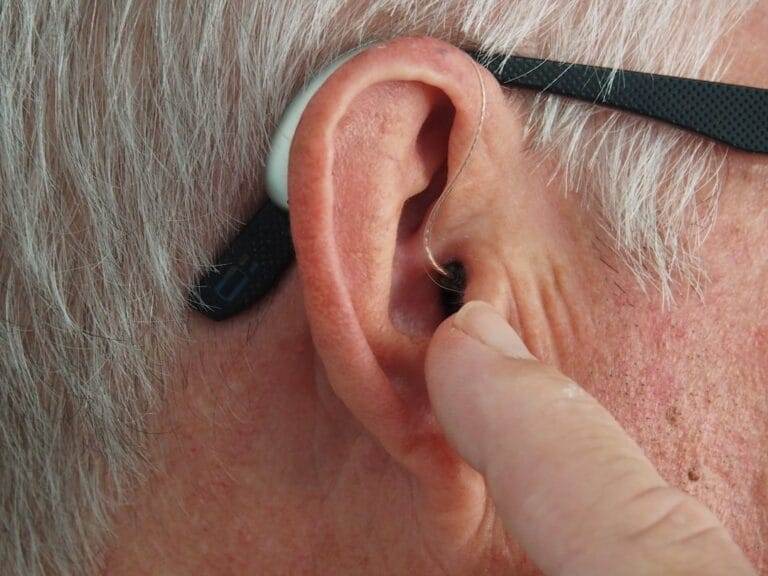Body piercing has been practiced for thousands of years, with evidence of its existence dating back to ancient civilizations such as the Egyptians, Romans, and Mayans. It has been used for various purposes, including cultural and religious rituals, as well as personal adornment. Today, body piercing is a popular form of self-expression and has evolved into a diverse art form with a wide range of styles and techniques.
There are many different types of piercings that can be done on various parts of the body. Some of the most common types include earlobe piercings, nose piercings, lip piercings, eyebrow piercings, and navel piercings. Each type of piercing requires precision and skill to ensure a successful and safe procedure.
Precision is of utmost importance in body piercing. A professional piercer must have a thorough understanding of anatomy and proper technique to ensure that the piercing is done accurately and safely. Improper placement or technique can lead to complications such as infection, scarring, and migration of the jewelry. Therefore, it is crucial to choose a professional piercer who has the knowledge and experience to perform the procedure correctly.
Piercing Aftercare: A Crucial Step for Healing
Aftercare is a crucial step in the healing process of a piercing. Proper aftercare helps to prevent infection, promote healing, and minimize complications. The specific aftercare instructions may vary depending on the type of piercing, but there are some general tips that apply to most piercings.
One of the most important aspects of aftercare is keeping the piercing clean. This can be done by gently cleaning the area with a saline solution or mild soap and water. It is important to avoid using harsh chemicals or alcohol-based products, as they can irritate the piercing and delay the healing process.
Another important aspect of aftercare is avoiding certain activities that can irritate or damage the piercing. This includes avoiding swimming in pools or hot tubs, as well as avoiding contact sports or activities that may cause trauma to the piercing. It is also important to avoid touching or twisting the jewelry, as this can introduce bacteria and delay healing.
During the healing process, it is common for some discomfort, swelling, and redness to occur. However, if these symptoms worsen or if there is excessive pain, discharge, or signs of infection, it is important to seek medical attention.
Choosing the Right Type of Jewelry for Your Piercing
Choosing the right type of jewelry for your piercing is crucial for both comfort and healing. There are many different types of jewelry materials available, including surgical steel, titanium, gold, and bioplast. Each material has its own advantages and disadvantages, so it is important to consider factors such as allergies, sensitivity, and personal preference when choosing jewelry.
In addition to the material, it is important to consider the size and fit of the jewelry. Jewelry that is too small or too tight can cause discomfort and irritation, while jewelry that is too large or loose can increase the risk of snagging or migration. It is important to consult with a professional piercer to determine the appropriate size and fit for your specific piercing.
Another factor to consider when choosing jewelry is the style or design. There are many different types of jewelry available, including studs, rings, barbells, and captive bead rings. The choice of jewelry style may depend on personal preference, as well as the specific type of piercing.
Piercing Placement: Factors to Consider

Piercing placement is an important factor to consider when getting a piercing. The placement of a piercing can affect both the aesthetics and functionality of the piercing. It is important to consider factors such as anatomy, symmetry, and personal preference when determining the placement of a piercing.
Anatomy plays a significant role in determining the appropriate placement for a piercing. Different parts of the body have different structures and tissues, which can affect how a piercing heals and looks. A professional piercer should have a thorough understanding of anatomy and how it relates to piercing placement.
Symmetry is another important factor to consider when determining piercing placement. Many people prefer symmetrical piercings, where both sides of the body are pierced in the same location. However, some piercings may be asymmetrical by design or personal preference.
Personal preference is also an important consideration when determining piercing placement. Some people may prefer a certain location or angle for their piercing based on their individual style or aesthetic preferences. It is important to communicate your preferences with your piercer to ensure that you are happy with the final result.
Improper piercing placement can lead to complications such as migration, rejection, or damage to surrounding tissues. It is important to choose a professional piercer who has the knowledge and experience to determine the appropriate placement for your specific piercing.
The Risks and Dangers of DIY Piercing
DIY piercing, or self-piercing, is a dangerous practice that should be avoided. While it may be tempting to save money or have more control over the process, DIY piercing comes with significant risks and dangers.
One of the main dangers of DIY piercing is the risk of infection. Without proper sterilization techniques and equipment, there is a high risk of introducing bacteria into the piercing site. Infections can be difficult to treat and can lead to serious complications if left untreated.
Another risk of DIY piercing is the risk of complications such as scarring, migration, and rejection. Without proper knowledge and technique, it is easy to make mistakes that can lead to these complications. Additionally, DIY piercings are often done with improper equipment or materials, which can further increase the risk of complications.
Seeking professional help for body piercing is crucial for a safe and successful experience. Professional piercers have the necessary knowledge, training, and equipment to perform piercings correctly and safely. They also have a thorough understanding of anatomy and proper technique, which reduces the risk of complications.
Piercing Etiquette: What You Need to Know
Proper etiquette is important when getting a piercing. It is important to respect piercers and their craft, as well as follow their instructions and guidelines. Here are some tips for proper piercing etiquette:
1. Be respectful and polite: Treat your piercer with respect and courtesy. They are professionals who have dedicated their time and expertise to provide you with a safe and successful piercing experience.
2. Follow instructions and guidelines: Listen to your piercer’s aftercare instructions and follow them carefully. They are designed to promote healing and minimize complications. If you have any questions or concerns, don’t hesitate to ask your piercer for clarification.
3. Be patient and understanding: Healing times can vary depending on the type of piercing and individual factors. Be patient and understanding during the healing process, and avoid changing or removing the jewelry before it is fully healed.
4. Avoid touching or playing with the jewelry: It is important to avoid touching or playing with the jewelry, as this can introduce bacteria and delay healing. If you need to adjust or clean the jewelry, make sure to wash your hands thoroughly beforehand.
5. Be mindful of others: If you have visible piercings, be mindful of others’ reactions and comfort levels. Some people may have personal or cultural beliefs that view body piercings differently, so it is important to be respectful of their perspectives.
How to Deal with Piercing Pain and Discomfort
Pain and discomfort are common during and after a piercing. While everyone’s pain tolerance is different, there are some general tips for managing pain and discomfort:
1. Take over-the-counter pain relievers: Non-steroidal anti-inflammatory drugs (NSAIDs) such as ibuprofen can help reduce pain and inflammation associated with a piercing. However, it is important to follow the recommended dosage and consult with a healthcare professional if you have any concerns.
2. Apply cold compresses: Applying a cold compress or ice pack to the piercing site can help reduce swelling and numb the area, providing temporary relief from pain and discomfort.
3. Avoid touching or playing with the piercing: Touching or playing with the piercing can increase pain and discomfort. It is important to avoid touching the piercing unless necessary for cleaning or adjustment.
4. Follow proper aftercare: Proper aftercare is crucial for minimizing pain and discomfort during the healing process. Following the aftercare instructions provided by your piercer can help promote healing and reduce complications.
If you experience excessive pain, swelling, redness, or signs of infection, it is important to seek medical attention. These may be signs of a complication that requires professional intervention.
Common Piercing Mistakes and How to Avoid Them
There are several common mistakes that people make during the piercing process and aftercare. These mistakes can lead to complications and delay the healing process. Here are some common piercing mistakes and how to avoid them:
1. Choosing an unprofessional piercer: Choosing an unprofessional piercer increases the risk of complications and infections. It is important to do thorough research and choose a piercer who is certified, experienced, and follows proper hygiene and safety measures.
2. Neglecting aftercare: Aftercare is crucial for healing and preventing complications. Neglecting aftercare or not following the instructions provided by your piercer can increase the risk of infection and delay healing.
3. Using improper cleaning solutions: It is important to use proper cleaning solutions, such as saline solution or mild soap and water, to clean the piercing site. Harsh chemicals or alcohol-based products can irritate the piercing and delay healing.
4. Changing or removing jewelry too soon: It is important to leave the initial jewelry in place until the piercing is fully healed. Changing or removing jewelry too soon can increase the risk of complications such as infection or migration.
5. Touching or playing with the piercing: Touching or playing with the piercing can introduce bacteria and delay healing. It is important to avoid touching the piercing unless necessary for cleaning or adjustment.
To avoid these mistakes, it is important to follow professional advice and guidelines provided by your piercer. If you have any questions or concerns, don’t hesitate to reach out to your piercer for clarification.
Piercing Removal: When and How to Do It Safely
There may be various reasons why someone may choose to remove a piercing. It could be due to personal preference, lifestyle changes, or complications. Whatever the reason, it is important to remove a piercing safely and properly.
If you decide to remove a piercing, it is important to wait until the piercing is fully healed. Removing the jewelry too soon can lead to complications such as infection or migration. It is recommended to consult with a professional piercer before removing a piercing to ensure that it is safe to do so.
To remove a piercing safely, it is important to follow these steps:
1. Wash your hands thoroughly with soap and water before touching the jewelry.
2. Gently twist or unscrew the jewelry in the direction that it was initially inserted. Avoid pulling or tugging on the jewelry, as this can cause damage or discomfort.
3. If the jewelry is difficult to remove, do not force it. It is important to seek professional help if you are unable to remove the jewelry safely.
4. After removing the jewelry, clean the piercing site with a saline solution or mild soap and water. Continue to clean the area regularly until it has fully healed.
It is important to note that once a piercing is removed, the hole may close up quickly. If you decide to re-pierce the same area in the future, it may require additional time and care for healing.
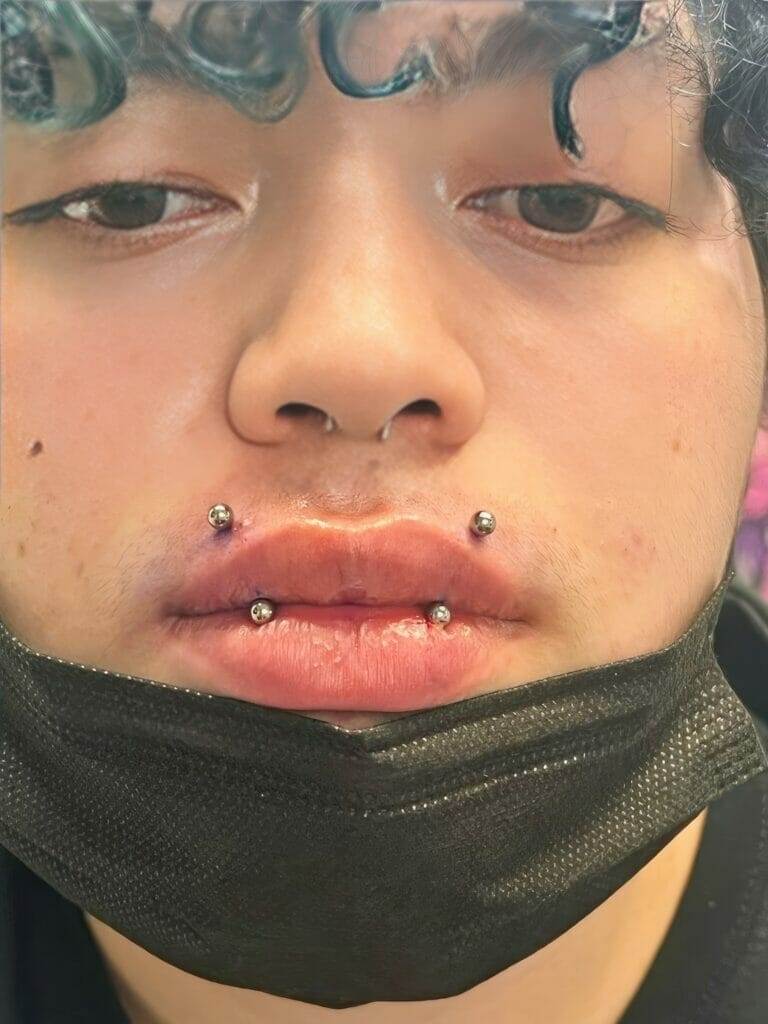
Piercing as a Form of Self-Expression and Artistry
Body piercing has evolved into a popular form of self-expression and artistry. It allows individuals to express their personal style and individuality through unique and creative piercings. However, responsible piercing practices are crucial for ensuring a safe and successful experience.
Choosing a professional piercer, following proper aftercare, and respecting proper etiquette are all important aspects of responsible piercing practices. It is important to prioritize hygiene, safety, and the well-being of your body when getting a piercing.
Piercing is not just a physical process, but also an emotional and artistic one. It allows individuals to express themselves and embrace their individuality. By following responsible piercing practices, individuals can enjoy the beauty and artistry of piercings while minimizing the risks and complications associated with the process.

